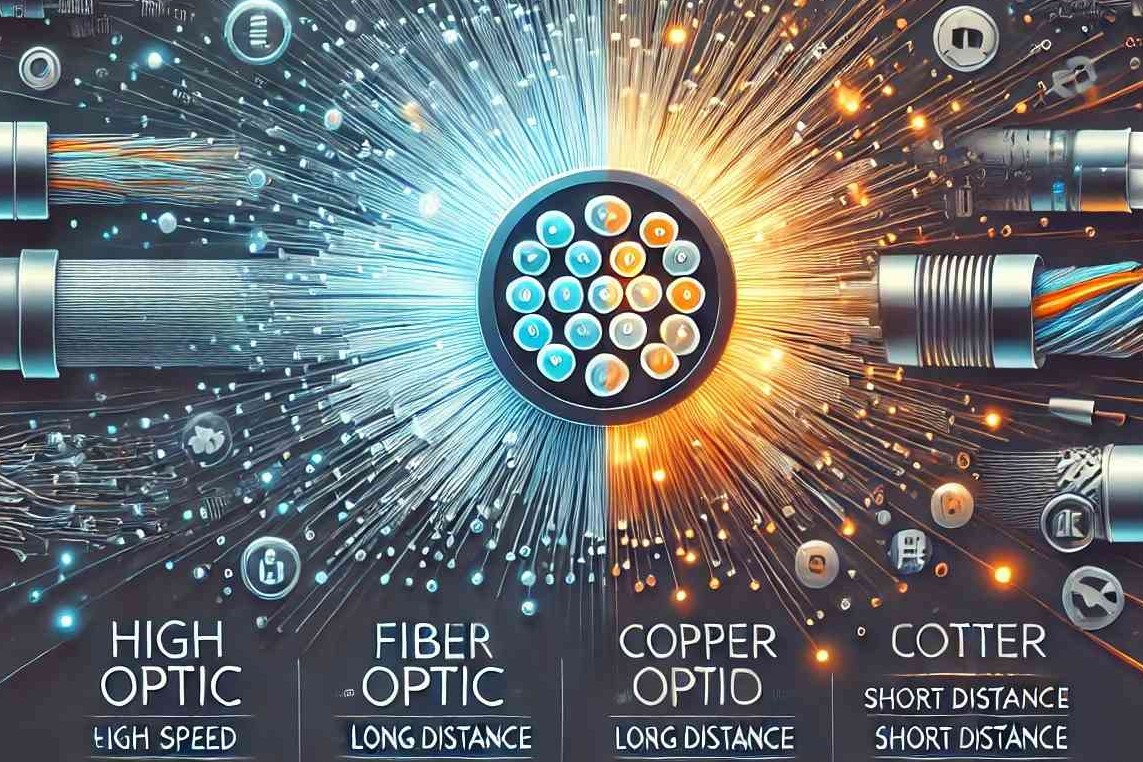29 August 2024
Understanding the 4 Differences Between Fiber Optics and Copper Cables
In the world of network technology and telecommunications, data transmission media are vital components that determine the quality and speed of communication. There are two types of cables commonly used for data transmission media: fiber optic cables and copper cables. Each has different characteristics and functions. Here are four main differences between fiber optic and copper cables.
Material Type and Transmission Method
- Fiber Optic: Fiber optic cables use glass or plastic fibers to transmit data. The transmission method is through light. When data is sent, it is converted into light signals that travel through the glass or plastic fibers. Because light travels at very high speeds, data can be transmitted quickly and efficiently.
- Copper Cables: In contrast, copper cables use copper conductors to transmit data in the form of electrical signals. This method is more conventional and has been used for a long time in various telecommunications and network applications. Although effective, transmission through electrical signals has some limitations compared to light transmission.
Speed and Bandwidth
- Fiber Optic: One of the main advantages of fiber optic is its much higher speed and bandwidth compared to other cables. Fiber optic can transmit large amounts of data at very high speeds, reaching up to terabits per second (Tbps). This makes fiber optic the ideal choice for high-speed networks such as broadband internet, corporate networks, and data center applications.
- Copper Cables: Unlike fiber optic cables, copper cables can support relatively high speeds but have limitations compared to fiber optic. Therefore, copper cables are usually used for lower-speed networks, such as telephone networks and local area networks (LANs). The maximum speed that copper cables can achieve is around gigabits per second (Gbps).
Transmission Distance
- Fiber Optic: Fiber optic excels in terms of transmission distance. Light signals transmitted through fiber optic can travel very long distances without significant signal degradation. Thus, fiber optic is highly suitable for long-distance communication, including undersea cables connecting continents and countries.
- Copper Cables: On the other hand, copper cables have transmission distance limitations. Electrical signals transmitted through copper cables tend to weaken as the distance increases. Therefore, copper cables are more suitable for short-distance applications, such as internal building or home networks.
Reliability and Interference
- Fiber Optic: Fiber optic offers higher reliability and is more resistant to electromagnetic interference. Since it uses light as the transmission medium, fiber optic is not affected by electromagnetic interference from the surrounding environment. This makes it a safe and stable choice for environments prone to interference.
- Copper Cables: Conversely, copper cables are more susceptible to electromagnetic interference. Electrical signals transmitted through copper cables can be affected by other electronic devices nearby, reducing the quality of data transmission. Therefore, to reduce interference, copper cables are often shielded with additional insulation layers.
Understanding the differences between fiber optic and copper cables is crucial in choosing the right transmission media for network and telecommunications needs.
Fiber optic offers superior speed, bandwidth, and transmission distance with higher reliability, making it the ideal choice for modern high-speed applications.
Copper cables, while more conventional and limited, remain a good choice for short-distance applications and less demanding environments. By understanding the characteristics of each, we can make wiser decisions in developing efficient and reliable network infrastructure.
Is this information helpful?
